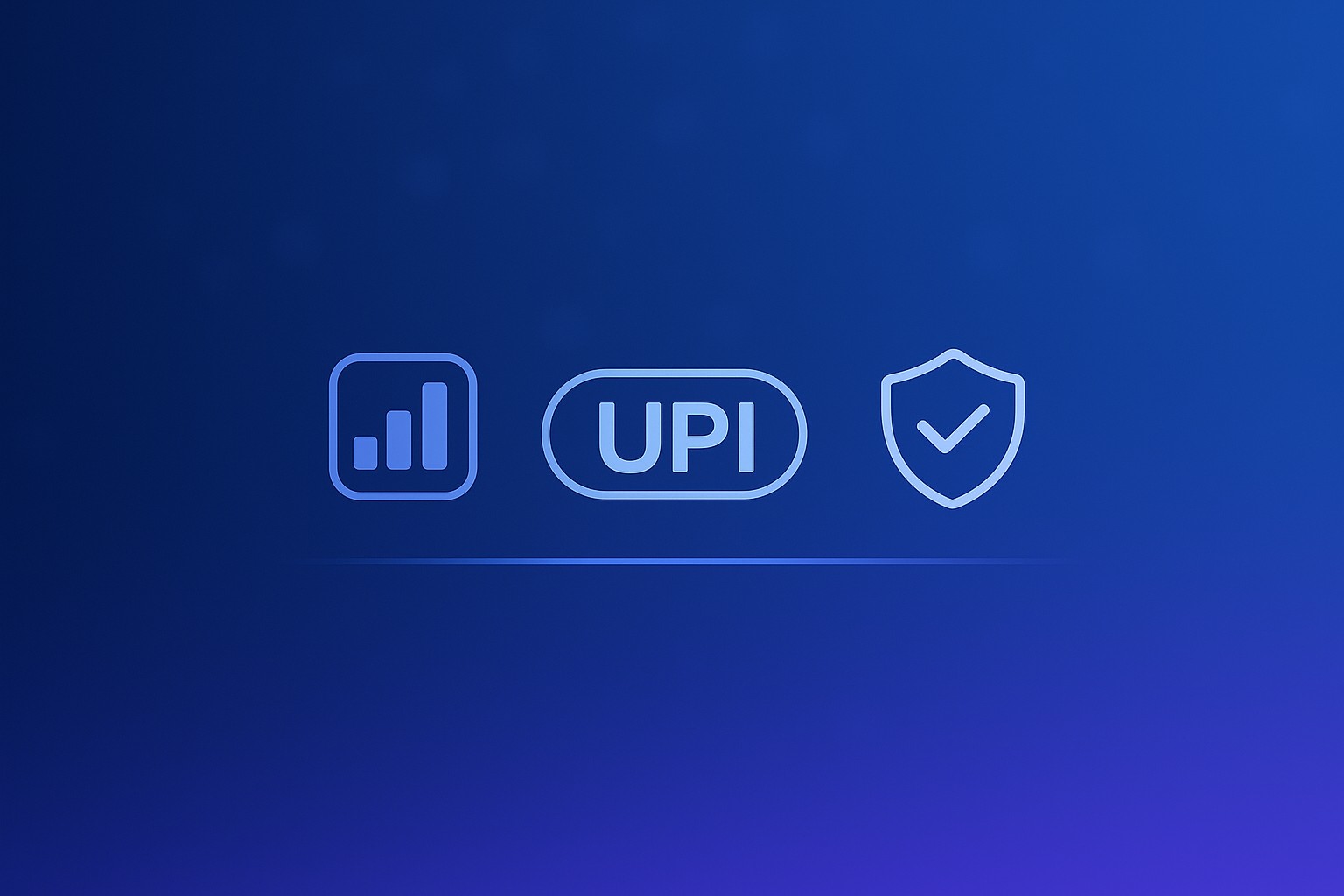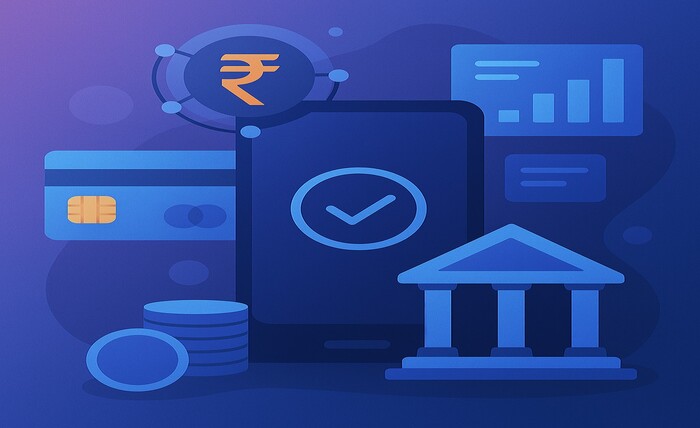Introduction: Reliability Is the New Currency of Digital Payments
In the digital economy, users expect payments to work the same way electricity or internet does — instantly, safely, and without interruption. Whether someone is buying groceries online, recharging a mobile wallet, paying rent, or ordering a cab, the expectation is simple:
The payment should succeed on the first attempt.
This is where the UPI System (Unified Payments Interface) stands alone.
Unlike many international payment frameworks, the UPI System is designed to maintain reliability at massive scale, delivering billions of real-time transactions every month while maintaining exceptional accuracy and uptime. It does not slow down during peak hours, does not buckle under festival traffic, and does not force users through complicated steps.
The result? The upi系统 has become the world’s most trusted and dependable digital payment framework — not by chance, but by engineering excellence, user-centered design, and continuous innovation.
Reliability Begins with Real-Time Bank-to-Bank Architecture
The UPI System is fundamentally different from other digital payments.
Where traditional payment systems rely on multiple intermediaries (card networks, processors, gateways), the UPI System connects banks directly through secure, real-time rails.
This architecture removes:
- unnecessary delays
- multi-step approvals
- external dependencies
- batch-based settlements
Because UPI operates on live, 24/7 bank connectivity, users get instant confirmation — not just from the app, but from the banking system itself.
This directness is the first reason the UPI System is exceptionally reliable.
High Success Rates Thanks to Smart Routing & Optimized Nodes
One of the biggest challenges in digital payments is routing transactions through the best possible path.
The UPI System excels here with intelligent routing, which automatically directs transactions through the fastest, most stable bank nodes available.
If Bank A is slow, UPI shifts to Bank B.
If a node is down, the UPI System avoids it.
If the load spikes, traffic is distributed intelligently.
This ensures:
- fewer failures
- fewer “pending” statuses
- fewer timeouts
- continuously high success rates
No other payment system in the world handles real-time load balancing with this degree of efficiency.
Secure Yet Frictionless Authentication Increases User Trust
Reliability isn’t just about speed — it’s also about security consistency.
The UPI System uses:
- device binding
- encrypted channels
- two-factor authentication
- UPI PIN verification
- bank-managed authorization
This ensures that every transaction is both safe and predictable.
Users know exactly what to expect:
open UPI app → enter PIN → payment success.
There are no:
- OTP delays
- SMS failures
- card declines
- multi-layer redirects
Security is handled at the bank level, but with a user flow so smooth that it becomes completely predictable — a key reason users consistently trust UPI over alternatives.
Built for Massive Scale — Billions of Transactions Without Breaking
Some payment systems work fine when transaction volume is moderate — but break under pressure.
UPI is built to scale far beyond that.
The UPI System consistently handles:
- festival mega-traffic
- national holiday spikes
- payroll days
- e-commerce sales
- sudden surges in app usage
- new product launches
Even during extreme usage peaks (like Durga Puja, Diwali, IPL campaigns, or New Year’s Eve), the UPI System maintains high uptime and throughput.
This reliability under pressure is unmatched globally.
Consistent Performance Across All UPI Apps and Banks
Reliability also means consistency, and UPI delivers this beautifully.
A payment initiated on:
- Google Pay
- PhonePe
- Paytm
- BHIM
- Banking apps
- QR scanners
- UPI API integrations
…behaves almost identically.
This is because the UPI System standardizes payment rules, protocols, and flows, ensuring that a user’s experience is not affected by which app they use.
For businesses and users, this uniformity removes confusion and dramatically increases reliability.
Designed to Eliminate Friction — Fewer Failure Points
Every extra step in a payment process is a potential point of failure.
UPI’s flow reduces these steps drastically.
No need for:
- card numbers
- CVVs
- OTPs
- expiration dates
- full KYC for small payments
- wallet top-ups
With fewer steps, the UPI System reduces:
- human errors
- gateway failures
- SMS issues
- authentication breakdowns
This streamlined design is one of the reasons UPI achieves one of the highest success rates globally.
The UPI Wake-Up Mechanism Ensures Always-Ready Banking Channels
A hidden reason behind UPI’s reliability is the UPI wake-up system, an infrastructure layer that keeps banking servers awake and responsive.
These wake-up pings prevent:
- idle server sleep
- slow first-time responses
- session expiries
- cold-start delays
This helps ensure the banking system reacts instantly when a UPI transaction starts.
For users, this translates into:
- faster handshake
- faster PIN validation
- faster completion
- fewer “server is busy” errors
This unique mechanism is part of why the UPI System feels so responsive and reliable at all hours.
API-Driven Design Enables Enterprise-Grade Integration
Reliability is not only about consumer payments — large platforms rely on backend stability.
The UPI System supports:
- refund APIs
- payout APIs
- verification APIs
- AutoPay subscription APIs
- transaction status APIs
- dynamic QR generation
- intent-based payment flows
This API-rich environment allows e-commerce, fintech, gaming, logistics, SaaS, and enterprise apps to integrate UPI with extremely high system stability.
When platforms automate workflows via UPI, the entire payment ecosystem becomes more reliable.
Real-Time Settlement Removes Guesswork and Delays
Unlike credit cards or wallets, which often hold funds temporarily, the UPI System settles money instantly into the recipient’s bank account.
Businesses benefit from:
- immediate liquidity
- easier reconciliation
- faster order processing
- more reliable cash flow
- lower financial risk
Real-time settlement is not just a convenience — it is a major reliability booster for operational planning, accounting, and business transparency.
Nationwide Adoption Ensures Universal Compatibility
UPI is not limited to a specific:
- bank
- device
- OS
- payment app
- region
- merchant type
It works:
- in metros & villages
- online & offline
- across all banks
- across all mobile devices
This universal adoption creates a predictable ecosystem where users and businesses know that payments will simply work.
No fragmentation.
No compatibility issues.
No “only works on this app” limitations.
This universality is a foundation of UPI’s reliability.
Government-Backed Stability & Regulatory Support
The UPI System is supported by:
- NPCI (National Payments Corporation of India)
- RBI (Reserve Bank of India)
- the Indian banking network
This means:
- government oversight
- regulatory compliance
- robust fraud monitoring
- national-level promotion
- continuous improvement initiatives
This institutional backbone ensures long-term reliability and stability far superior to private wallets or third-party payment apps.
Continuous Innovation Keeps the System Ahead
UPI’s reliability isn’t static — it grows stronger every year.
Major enhancements include:
- UPI Lite (offline payments)
- UPI AutoPay (subscriptions)
- UPI for credit lines
- UPI international payments
- UPI on NFC devices
- UPI with voice-based approval
- UPI for IoT and wearables
This shows that the UPI System is evolving not only for the present but also for the future of global digital payments.
Conclusion: The UPI System Sets the Gold Standard for Reliable Digital Payments
Reliability in digital payments requires:
- instant processing
- stable infrastructure
- secure authentication
- consistent user experience
- predictable performance
- nationwide compatibility
- strong regulatory backing
The upi系统 achieves all of this — and does so at a scale unmatched anywhere else in the world.
That is why India’s UPI System has not only become a national success but is now being adopted internationally as a model for the future of digital finance.







